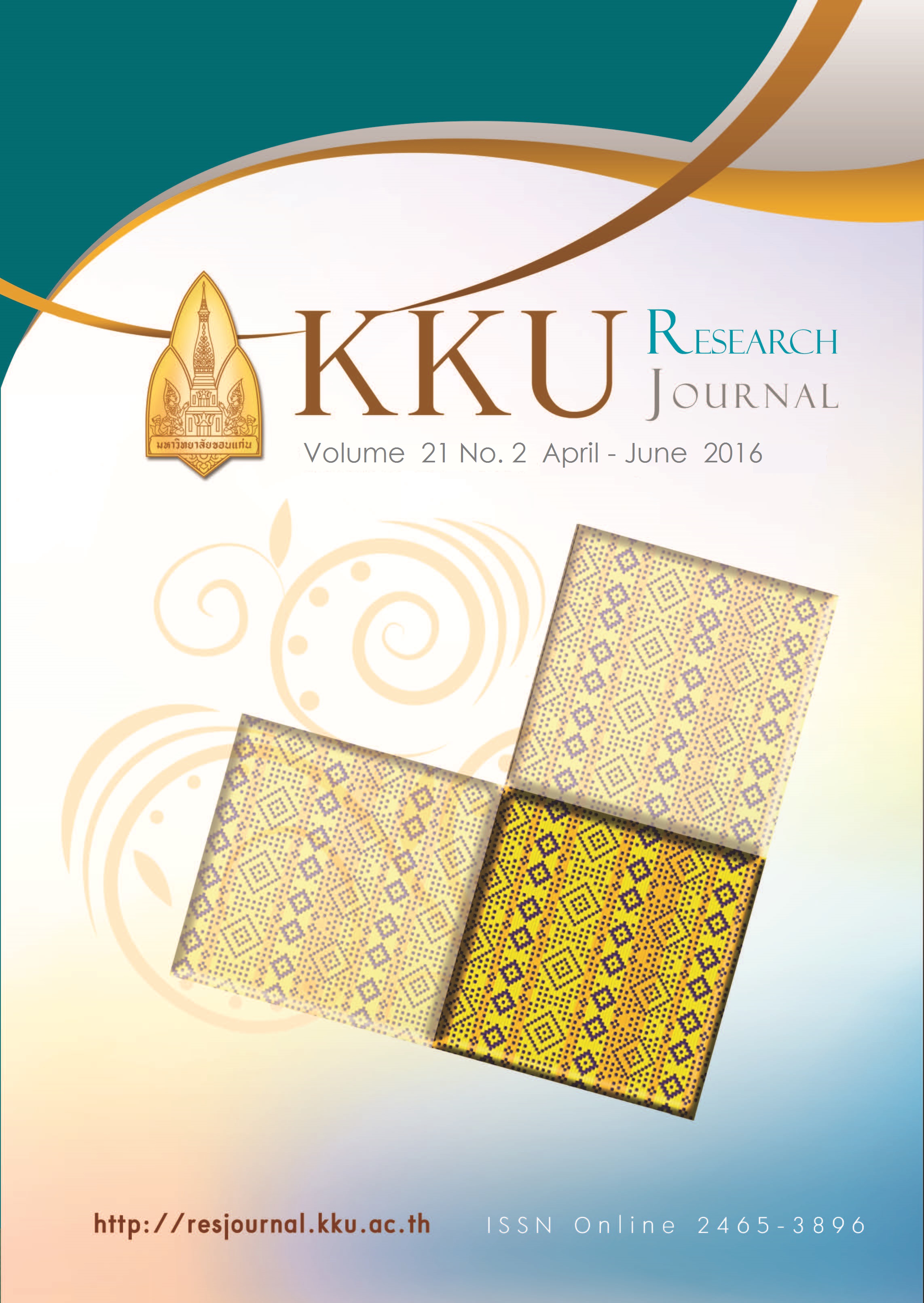The potential of prebiotic production from wild yam as lactobacillus casei growth promoter
Main Article Content
Abstract
The infant intestinal tract is essentially sterile part and experiences a period of steady colonization over the following weeks and months as it is exposed to microorganisms from the environment. It is generally accepted that these microorganisms have a major impact on the overall development and function of the gastrointestinal mucosa and immune system. This research aims at prebiotic extraction from wild yam which is a plant in the local area. The study found that prebiotic extracted from wild yam soaked for 24 hours and 3 days gave the prebiotic concentration of 1,437 μg/ml and 1,141 μg/ml, respectively. The optimum conditions for prebiotic extraction consisted of the extraction ratio, temperature and soaking time of 1:30 (w/v), 85°C and 30 minutes, respectively. The growth of Lactobacillus casei subsp. rhamnosus in fermented milk supplemented with wild yam extract was investigated. Result showed that the fermented milk with prebiotic extract (3 days soaking wild yam) was able to promote growth of L. casei subsp. rhamnosus.
Article Details
References
[2] Ingrid W, Gerhard R, Beatrice LP. Protective Role of Probiotic and Prebiotic in Colon Cancer. American Journal of Clinical Nutrition. 2001 ; 73 : 451- 455.
[3] Fuller R. and Gibson GR. Modification of the intestinal microfolra using Probiotic and Prebiotic, Scand J Gastroenterol. 1997 ; 32 : 28-31.
[4] Gibson GR. and Roberfroid MB. Dietary modulation of the human colonic microbiota : Introducing the concept of Prebiotic. Journal of nutrition. 1995 ; 125 : 1401-1412.
[5] Handan K and Robert W. Fermentation of fructooligosaccharide by Lactic acid bacteria and Bifidobacteria. Applied and Environmental Microbiology. June 2000 ; 66(6) : 2682-2684 .
[6] Niness KR. Inulin and oligofructose : what are they?. Journal of Nutrition. 1999 ; 129(7) : 1402-1406.
[7] Bandaru SR. Possible mechanisms by which pro- and prebiotic influence colon carcinogenesis and tumor growth. American Society for Nutritional Sciences. 1999 ; 129: 1478-1482.
[8] Santad W, Paiboon T, Akkasit J, Worrapanit C, Preeya H, Tipparat H, Arunporn I, Buncha O. Extraction and analysis of prebiotics from selected plantsfrom southern Thailand. Songklanakarin J. Sci. Technol. Sep. - Oct. 2011 : 33 (5), 517-523.
[9] Barrangou R, Klaenhammer TR, Altermann E. Functional and comparative genomic analyses of an operon involved in fructooligosaccharide utilization by Lactobacillus acidophilus.Proc Natl Acad Sci U S A. 2003 ;100(15): 8957- 62.
[10] Megh RB and Jun K. Bitterness and Toxicity in Wild Yam (Dioscorea spp.) Tubers of Nepal. Plant Foods for Human Nutrition. 2005; 60: 129 – 135.
[11] Mohd H, Haji R, Mohd. Rizuwan Y, Md. SJ, Mohd SS, Nurul SM, Asma AZ. An Overview on Mechatronic Application and Effectiveness of Developed Stand Alone Dioscorine Removal System. Journal of Automation and Control, 2013: Vol. 1 : No. 1 : 1-5.
[12] Gibson, GR, Beatty EB, Wang X, Cummings JH. Selective stimulation of bifidobacteriaIn the human colon by oligofructose and inulin.Gastroenterology. 1995 ; 108 : 975-982.


